Islamic Architecture
Islamic architecture is one of the most significant cultural legacies, combining faith, artistic expression, and technological innovation. As a result, it has shaped not only the Muslim world but also influenced global architecture. This unique architectural style goes beyond providing places of worship; it has been central to the cultural, intellectual, and social development of Islamic societies throughout history. From the towering minarets to the intricate geometric patterns and flowing calligraphy, every element reflects a deep-rooted connection to Islamic values. Furthermore, these features symbolize unity, beauty, and devotion to the Divine.
In this blog, we will delve into the architectural achievements of the Islamic Golden Age. Additionally, we will explore the symbolic meaning behind domes in Islamic buildings and uncover the distinctive features that make Muslim architecture unparalleled. We will also highlight iconic examples from across the globe, from the majestic mosques of Spain to the timeless beauty of the Taj Mahal. Furthermore, this illustrates the far-reaching influence and enduring legacy of Islamic design.
Origins of Islamic Architecture
Islamic architecture originated in the 7th century, during the time of Prophet Muhammad (SAW). As the religion spread, the need for mosques, palaces, and public buildings grew. This development led to the creation of an architectural style that unified both aesthetic and spiritual needs. Initially, Muslim architecture was influenced by Byzantine, Persian, and Roman styles. However, it gradually developed its own identity, placing a strong emphasis on modesty, balance, and functionality.
As a result, Islamic architecture became a force, creating spaces that allowed Muslims to reflect on their faith and community. Over time, the style evolved, incorporating regional variations while maintaining core principles like simplicity and a focus on spirituality.
The Islamic Golden Age and Architectural Innovation
The Islamic Golden Age, from the 8th to the 14th centuries, was a time of remarkable advancements in science, mathematics, and culture. During this period, Muslim scholars made significant discoveries that influenced intellectual thought. These discoveries also left a lasting impact on the architecture of the Islamic world. Architects began to incorporate new ideas such as geometry, symmetry, and proportion, resulting in more sophisticated and visually striking designs.
One of the most important architectural innovations of the Islamic Golden Age was the development of domes. Domes in Muslim architecture served both practical and symbolic purposes. Practically, they allowed architects to create large, open spaces while evenly distributing the weight of the structure. Symbolically, domes represented the heavens and the infinite greatness of Allah. The interiors of these domes were often adorned with intricate patterns and calligraphy, further enhancing their spiritual and aesthetic appeal.
Key Characteristics of Islamic Architecture
Muslim architecture has many key characteristics that make it stand out. These features are not only beautiful but also represent the values of Islam.
Domes and Minarets
Domes are among the most iconic features of Islamic architecture, often crowning mosques as a representation of the sky and heavens. Minarets, tall slender towers, are another prominent feature. They serve a practical purpose as the place from which the call to prayer (Adhan) is made, but they also stand as visual reminders of faith and the central role of the daily prayers in the life of a Muslim.

Geometric Patterns and Calligraphy
The architecture of Islam often features intricate geometric patterns and Arabic calligraphy. Islam prohibits the depiction of living beings in religious structures. As a result, Muslim artists focused on using patterns and words to adorn mosques and palaces. These patterns often symbolize the harmony of the universe and the magnificence of Allah’s (SWT) creation. Calligraphic verses from the Quran are also employed to inspire worshippers.

Courtyards and Gardens
Many Islamic buildings feature courtyards and gardens, which provide a peaceful space for reflection and relaxation. Water features such as fountains, along with shaded areas, are common elements in these courtyards. They symbolize the paradise described in the Quran. These courtyards are not only functional but also add to the overall beauty and harmony of the space.
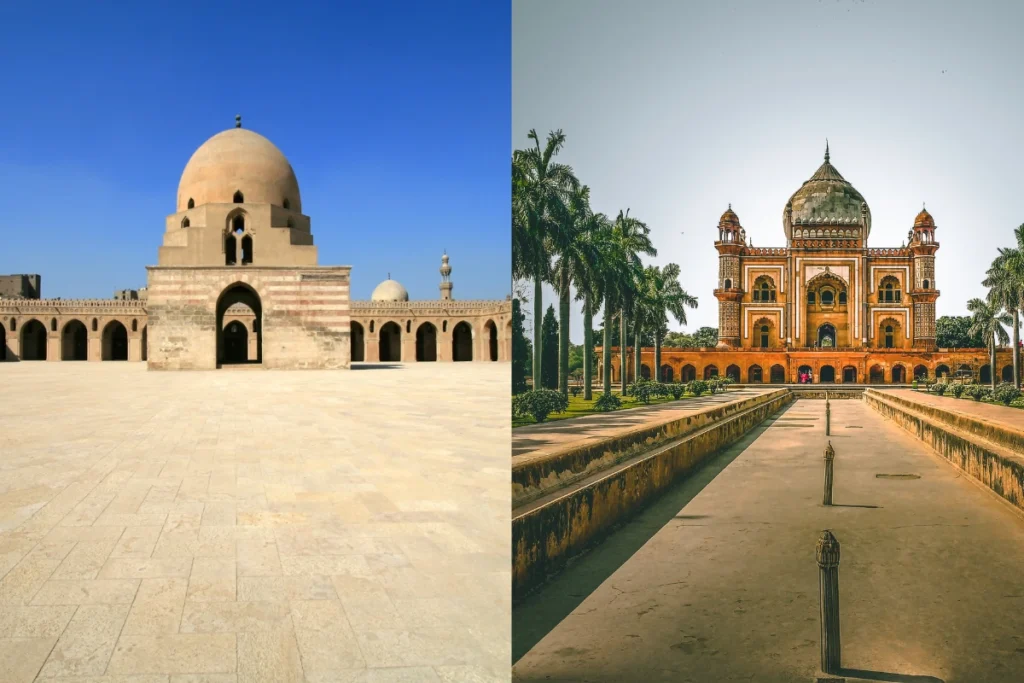
Use of Light and Space
Islamic architecture often makes great use of natural light and open spaces. Architects often use large windows, open courtyards, and reflective surfaces to bring natural light into buildings. This design creates a serene and uplifting atmosphere. The thoughtful use of space, with wide, open interiors and carefully designed layouts, enhances the sense of openness and connection to the divine.

Simplicity and Elegance
Islamic architecture is known for its balance between simplicity and grandeur. Exteriors are often modest and unassuming. In contrast, the interiors reveal a world of intricate detail, featuring elaborate tile work, calligraphy, and geometric patterns. This contrast represents the Islamic value of focusing on inner beauty and spiritual richness rather than outward appearances.
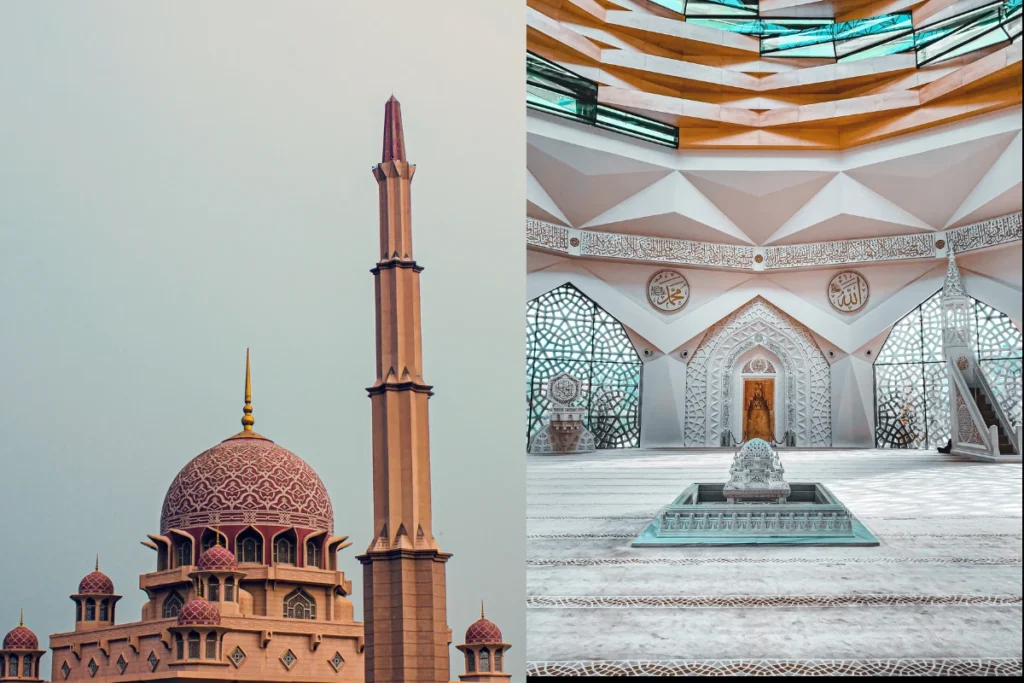
Styles of Islamic Architecture
Islamic architecture is mixed, reflecting the cultural and geographical variety of the Muslim world. However, some major styles have developed, each contributing unique elements to the broader tradition.
Umayyad and Abbasid Architecture
Early Islamic architecture, under the Umayyads and Abbasids, laid the foundation for Islamic architectural principles. These dynasties focused on constructing mosques, palaces, and administrative centers. The Great Mosque of Damascus, known for its large courtyard, towering minarets, and intricate mosaics, is an outstanding example of Umayyad architecture. Similarly, the Abbasid Al-Mansur Mosque in Baghdad reflects the Abbasids’ emphasis on creating grand, functional spaces for worship and governance.
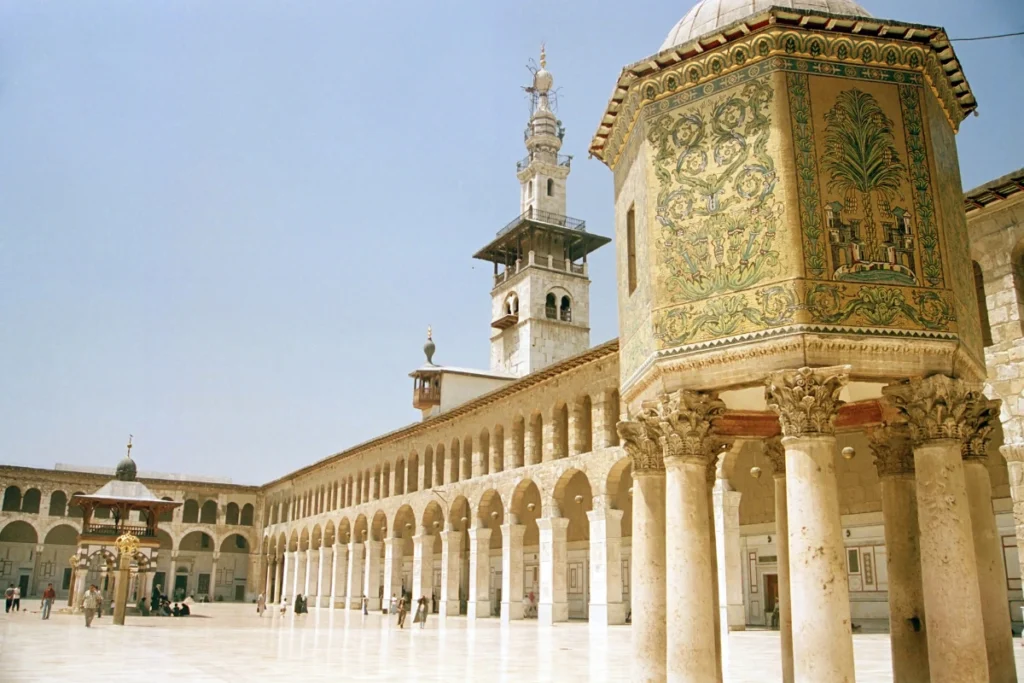
Persian Architecture
The influence of Persian culture on Islamic architecture is profound, particularly in the use of large domes, iwans (rectangular halls or spaces), and elaborate tile work. Persian Islamic architecture is exemplified by the Isfahan Mosque in Iran, famous for its vibrant blue tiles, grand dome, and symmetrical iwans. This style blends geometry with a sense of grandeur, showcasing the beauty and precision of Persian craftsmanship within an Islamic context.
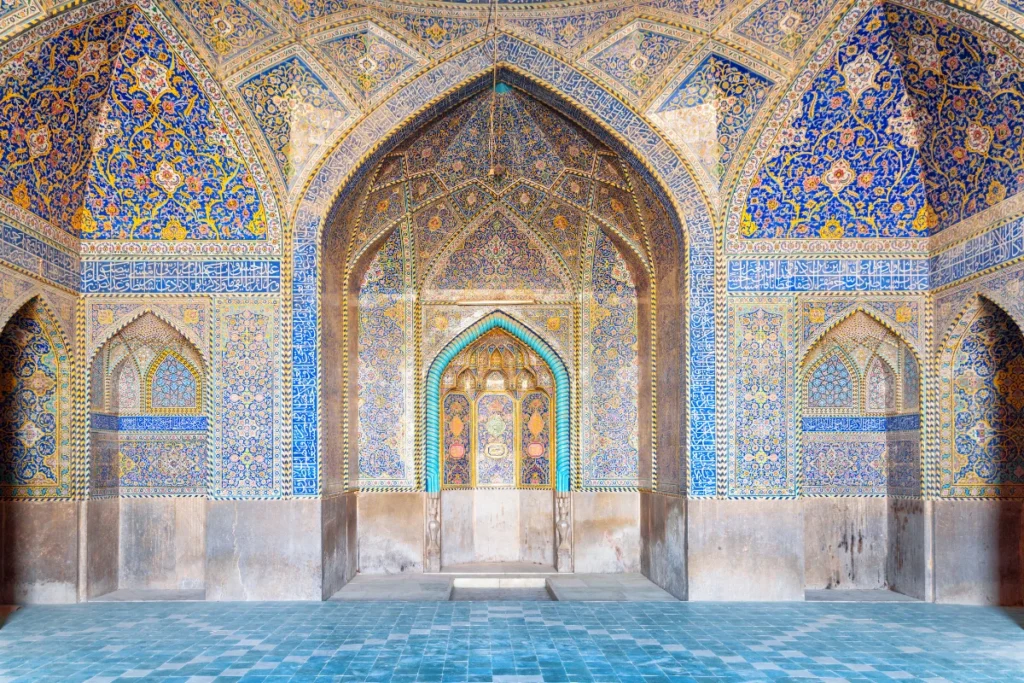
Ottoman Architecture
The Ottoman Empire made significant contributions to Islamic architecture. It played a key role in developing huge mosques that symbolized both religious devotion and imperial power. The Süleymaniye Mosque and the Blue Mosque (Sultan Ahmed Mosque) in Istanbul are iconic examples of Ottoman architecture. These structures are characterized by their vast domes, multiple minarets, and richly decorated interiors, often featuring intricate calligraphy and tile work. The Blue Mosque, with its six minarets and stunning blue-tiled interior, is a masterpiece of Ottoman design. It remains one of Turkey’s most famous landmarks.

Mughal Architecture
Mughal architecture, which flourished in India during the 16th and 17th centuries, is distinguished by its harmonious blend of Islamic, Persian, and local Indian styles. The Taj Mahal, one of the most celebrated buildings in the world, exemplifies the Mughal approach to architecture. Its stunning white marble structure is adorned with Islamic calligraphy, Persian-inspired gardens, and intricate carvings that draw from both Hindu and Islamic motifs, creating a seamless fusion of cultural influences.

Andalusian Architecture
Islamic architecture in Al-Andalus (Muslim Spain) developed its own distinctive style. It incorporated elements such as horseshoe arches, detailed stucco work, and elaborate palatial designs. The Great Mosque of Córdoba and the Alhambra in Granada are two of the most famous examples of Andalusian Islamic architecture. The Great Mosque is noted for its rows of striking red-and-white arches. The Alhambra, with its intricate tilework and serene courtyards, is a symbol of the sophistication of Islamic architecture in medieval Spain. Additionally, smaller but equally significant examples include the Alcázar of Seville and the Aljafería Palace in Zaragoza. It showcases the lasting influence of Islamic design on Spanish architecture.
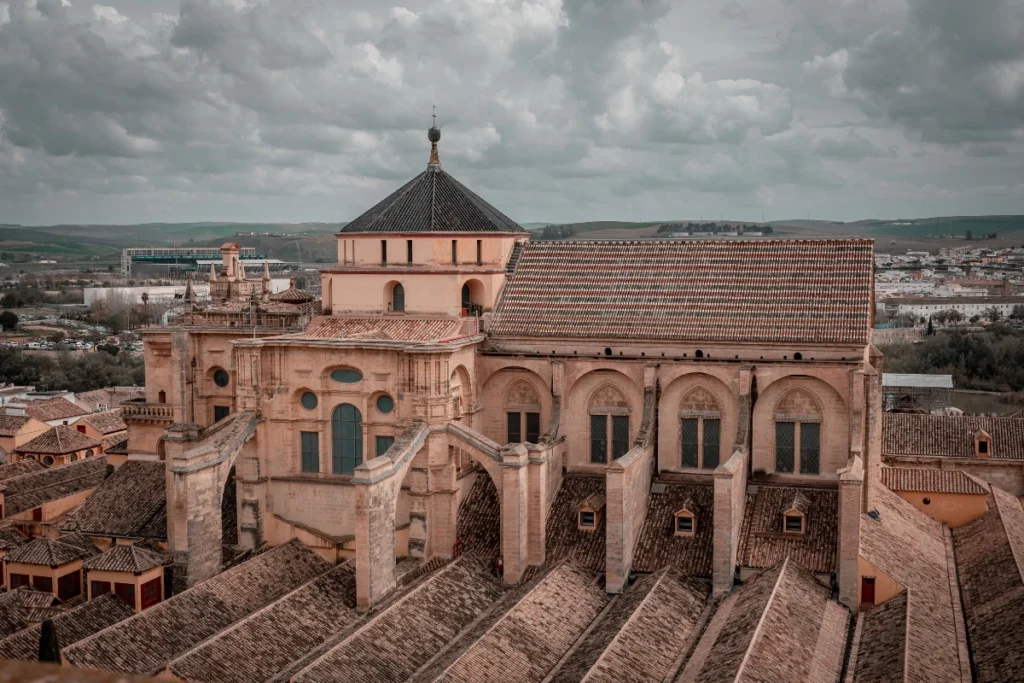
Dome of the Rock in Jerusalem
The Dome of the Rock in Jerusalem is one of the oldest and most iconic examples of Islamic architecture, particularly noted for its distinctive dome. Constructed in the late 7th century during the Umayyad Caliphate, the structure features a striking golden dome. Additionally, it showcases intricate tilework and beautifully inscribed Quranic verses. The Dome of the Rock is one of the earliest and most enduring masterpieces of Islamic art and architecture. It stands as both a religious and architectural symbol. Furthermore, it is celebrated for its beauty and spiritual significance.
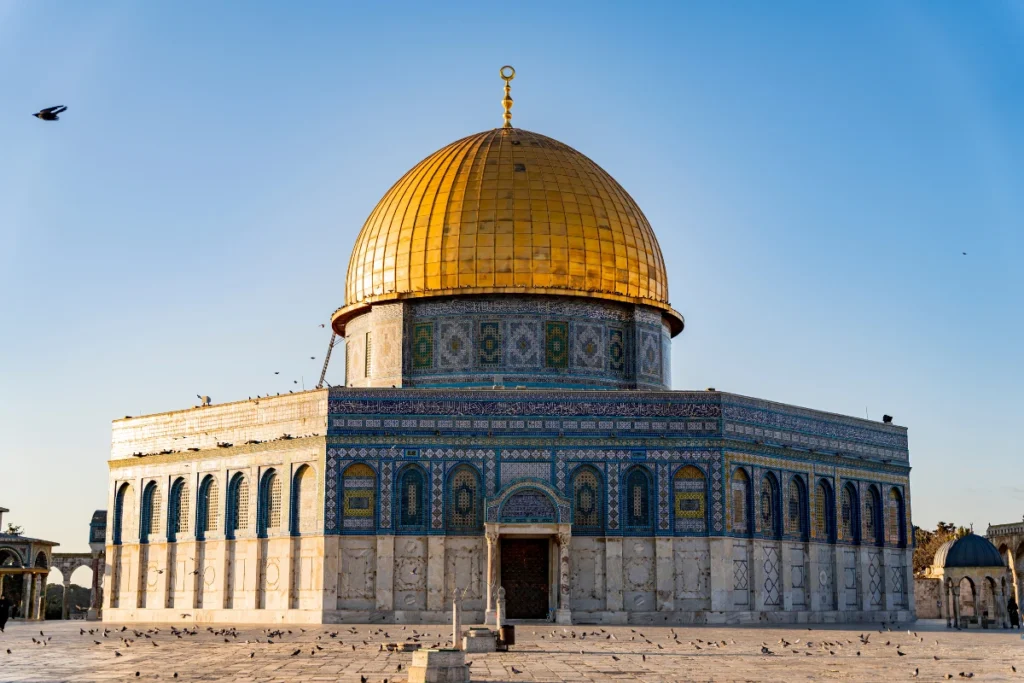
Most Important Example of Islamic Architecture
Masjid an-Nabawi, located in Medina, Saudi Arabia, was originally built by Prophet Muhammad (PBUH) in 622 CE, making it one of the most significant mosques in Islam. Over the centuries, the mosque underwent various expansions under prominent Islamic rulers. Caliph Al-Walid I, during the Umayyad period, added important architectural elements. Contributions from Ottoman sultans and modern Saudi rulers further enhanced its development, transforming it into a symbol of Islamic unity and devotion. The mosque is famous for its iconic green dome, under which Prophet Muhammad (PBUH) is buried. Its towering minarets and intricately adorned walls make it both an architectural masterpiece and a profound spiritual beacon.

The Global Influence of Islamic Architecture
The impact of Islamic architecture can be seen worldwide, extending far beyond the borders of the Islamic world. Architects in Europe, North Africa, and Asia have drawn inspiration from Islamic architecture over the centuries, contributing to a global architectural legacy.
Islamic architecture, characterized by its use of domes, arches, courtyards, and geometric patterns, has served as a source of inspiration for architects and designers across the globe. The principles of balance, symmetry, and harmony that define Islamic architecture continue to be studied and appreciated today.
Scholars and architects around the world are actively engaged in researching the history, theory, and practice of Islamic architecture. This ongoing interest underscores the enduring significance of this architectural tradition and its influence on modern designs.
Conclusion: The Enduring Beauty of Islamic Architecture
Islamic architecture has shaped the world for centuries, inspiring people through its beauty, creativity, and spiritual significance. From the grand mosques of the Middle East to the magnificent Taj Mahal, Islamic architecture reflects the faith and culture of Muslim societies. It also showcases the advancements made within these civilizations.
The distinctive features of Islamic architecture, such as domes, minarets, geometric patterns, calligraphy, and courtyards, continue to inspire admiration. These architectural elements not only serve practical purposes but also create deeply spiritual spaces, allowing individuals to connect with their faith and appreciate the beauty of the world around them.
As we look at the stunning structures of Islamic architecture, we honor the rich cultural heritage they embody and their enduring impact on the world.









